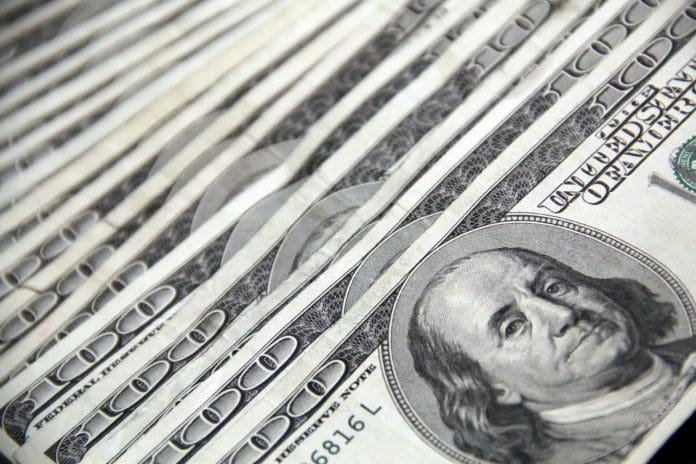With the 2023 tax season in full swing, the scammers are back to relieve you of your money through fraudulent schemes and promises of better tax refunds. With tax refunds shrinking in 2023 after two years of generous payments, people are desperate and susceptible enough to fall for schemes that promise to increase their refunds or shrink the size of the taxes.
Online scammers have come up with various ways to cheat filers. They have been urging taxpayers to fudge income and withhold figures as well as the employer it is coming from. The IRS issued a warning Friday about fresh scams that encourage taxpayers to use their wage information on the return to file for false credits in exchange for bigger tax refunds.
In the latest W-2 scheme, online scammers are urging taxpayers to make up large income and withholding figures. They are also advising employees to withhold the identity of their employer. The scammers then instruct filers to file bogus income tax returns electronically assuring them that they are in line for a substantial refund that could be as large as five figures depending upon the amount they withhold, the IRS has revealed in a statement released recently.
The IRS has urged people not to be taken in by these scammers. They have said that there are worrisome signs that the scammers are succeeding in misleading people and innocent taxpayers are tempted into falling into the well-planned traps that put the taxpayers at risk both financially and in danger of facing grave criminal charges that could invite hefty fines, criminal penalties, and even jail terms, according to Doug O’Donnell, the Acting IRS Commissioner.
Nor Secret Recipe To Bigger Tax Refunds
O’Donnell revealed that there was Security Summit along with the agency constantly reminding taxpayers that there was no secret recipe to free money, and improbable returns as far as the tax agency was concerned. He urged people not to make up income figures and attempt to submit fraudulent income tax returns in the hope of getting inflated income tax refunds.
There are two versions of the scams, the IRS has revealed. And both are concerned with misusing W-2 wage figures and trying to obtain larger tax refunds through it.
The first variation of the tax refund scam involves convincing taxpayers to use Form 7202, which is the Credits for Sick Leave and Family Leave for Certain Self-Employed Individuals. This is used to claim credits that are linked to income earned as employees and not as self-employed filers.
The IRS says that such credits were available for the self-employed for both 2020 and 2021 during the pandemic. but they have been discontinued for the 2022 income tax returns, that are being filed this year.
The second variation of this tax refund scam involves filers making up fictional employees who are shown as working in their households. The filers then use Schedule H of Household Employment Taxes and claim a tax refund linked to family wages and sick wages though it was never paid in the first place.
Filers are to use such forms to report taxes on household employment and to report household employment tax if someone was hired to do household jobs. Those wages should have been subject to Social Security, FUTA taxes, or Medicare, or if the employer withheld federal income tax from such wages.
The premier tax agency issued a stern warning to remind taxpayers that they could end up paying a broad range of penalties that includes a return penalty of up to $5,000 and even face criminal prosecution for filing false tax returns.
New IRS Data Shows Income Tax Filing Remains Healthy Even As Tax Refunds Go Down
Latest data from the IRS continues to indicate that filers are getting their income tax returns processed more quickly that in 2022. Receiving data available comparing data on February 10 of 2022 and 2023 continues to show an upswing in filing numbers.
The agency has already received 28,826,000 individual income tax returns this year. This compares favorably to 26,421,000 in 2022. That is a 9.1% rise though it is the 13.5% that was reported last week. But it remains a healthy rate of tax returns.
The agency also has been processing tax returns more quickly this year. And this is reflected favorably in the clearance of the huge backlog that has accumulated over the years, especially during the last couple of years during the pandemic. This slowdown was a direct result of budget cuts initiated by the previous president Donald Trump against the agency that severely curtailed its efficiency for the past 4 years.
Fresh data reveals that the agency has already processed 26,622,000 returns in 2023, comparing favorably with 23,438,000 at this time during 2022. It is a huge improvement of 13.6% over 2022.
Most of the income tax returns that were received in 2023 (94%), were electronic filings. And 60% of the electronic filing was marked self-prepared while the rest were prepared and filed by tax professionals.
Another significant change was the visit to the IRS website. It is down for 2023 by 13.4%, though there is an indication that the numbers could be up next week. The two weeks after Presidents’ Day is the busiest time of tax season and IRS has recommended that filers click on the IRS.gov site instead of relying overtly on the phone number given.
Tax Refunds For 2023 Are Down When Calculated Individually
Coming back to income tax refunds, the IRS has already issued 13,341,000 tax refunds this year. This is a significant increase when compared to 8,992,000 in 2022. This marks an increase of 48% over last year. And as those numbers are huge, the overall money sent out as tax refunds has grown to $26.648B.
But as expected, the end of the enhanced version of the Child Tax Credit stimulus check has meant that the average tax refund check is also small at $1,997 per tax-paying individual or household as compared to $2,323 for the tax year 2021 payable in 2022.
The same is true also for direct deposit refunds. The number has increased by 35% while total direct deposits have gone up. But the average deposit rate is down from $2,400 last year to $2,084 in 2023.






